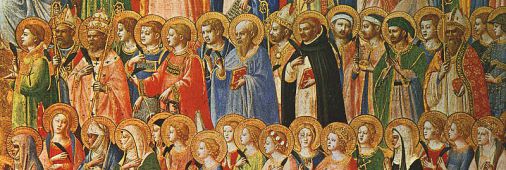THE TERMINOLOGY OF SAINTS AND HOLY PEOPLE

The cause forr sainthood normally begins five years after the holy person’s death. Usually a promoter group is formed. This might be a diocese, a religious order or even a parish.
The diocese in which the person being proposed for sainthood died is responsible for beginning the investigation, and the bishop of that diocese is asked by the promoter group to begin the investigation. The bishop obtains permission from the Vatican to do so. He then usually forms a diocesan tribunal, or special court, to assist him.
Witnesses are called to this tribunal to explain the things they saw or heard that demonstrated heroic virtues of faith, hope and charity, or “cardinal virtues,” which are prudence, justice, temperance, fortitude and others specific to the proposed saint’s life. All documents, letters and testimony related to the holy person are gathered, and he or she can then be called Servant of God.
Once the bishop and his diocese complete their investigation, all of the material they have gathered and their reports are sent to the Vatican’s Congregation for the Causes of Saints. Nine theologians examine a prepared summary report and vote on whether or not they believe the cause should move forward. Once a majority vote is received, the cause is then given to the bishops in the congregation for their review.
If those members of the Congregation believe the cause should move forward, the cause is passed on to the pope for his approval. A decree is drafted and read/published publicly, and the holy person is now called Venerable.
For a person to move toward beatification, whereby they are called Blessed, a miracle attributed to the potential saint is necessary. Documentation of the miracle is given canonical (official Church) examination. If the conclusion is positive, the pope can then decide to beatify the person. A feast day is generally assigned to that candidate as well.
For sainthood, a second miracle attributed to the intercession of the person is needed and must go through the same examination. If accepted, the pope may decide to declare the beatified person, Saint.
You will also see reference to a “Doctor of the Church.” This is a title given by the Pope to a saint who has made an important contribution to theology or Church doctrine. Sts. Ambrose, Augustine, Jerome, and Pope Gregory I were the first declared Doctors of the Church in the Roman Catholic Church.
Since 1970, four women have been named Doctors of the Church: St. Teresa of Ávila, St. Catherine of Siena, St. Thérèse of Lisieux, and St. Hildegard of Bingen to that list. You can also find a listing of Doctors of the Church included on this site.
Additionally, some saints are “mystics,” but not all mystics are saints. Mystics are persons who strive to have strong relationships with God through prayer and devotions. But some mystics also receive special graces from God, such as visions — like those of St. Bernadette Soubirous — or stigmata — like those of St. Pio of Pietrelcina. You can also find a listing of mystic saints included on this site.
